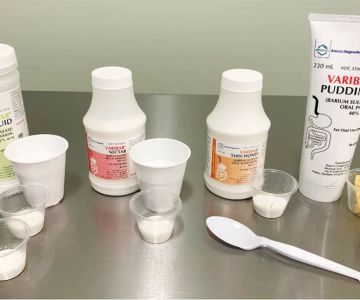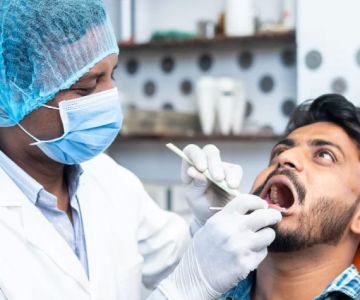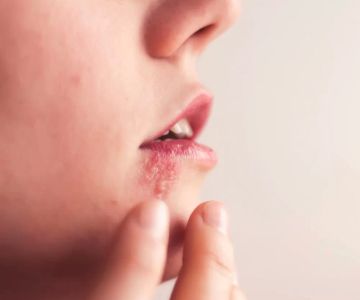How Often Should You Check for Oral Cancer?
Oral cancer, also known as mouth cancer, can occur in any part of the mouth, including the lips, gums, tongue, roof and floor of the mouth, and even the throat. Although it is often overlooked, early detection of oral cancer can significantly increase the chances of successful treatment. However, many people wonder how often they should check themselves for signs of oral cancer and whether regular self-exams are necessary. This article will dive deep into how you can monitor your oral health, the importance of early detection, and the steps to take if you suspect something unusual.
Why Early Detection of Oral Cancer is Crucial
Oral cancer often goes unnoticed in its early stages because the symptoms can be quite subtle. Early detection is crucial because, when identified early, oral cancer can often be treated more effectively. Unfortunately, the majority of cases are diagnosed in the later stages when the cancer has spread beyond the mouth, which significantly reduces the chances of survival.
According to the American Cancer Society, oral cancer is responsible for thousands of deaths in the U.S. each year. In fact, approximately 54,540 Americans will be diagnosed with oral or pharyngeal cancer in 2023 alone. The survival rate drops significantly once the cancer has spread, which is why regular checks for signs of oral cancer are essential.
There are several factors that increase the risk of developing oral cancer, such as smoking, excessive alcohol consumption, and exposure to the human papillomavirus (HPV). Understanding your risk and staying vigilant with self-exams and professional screenings can help catch the disease in its early stages and improve outcomes.
How Often Should You Perform a Self-Check for Oral Cancer?
The American Dental Association (ADA) and other health organizations recommend that individuals conduct a self-exam for oral cancer at least once a month. Performing a regular self-exam allows you to become familiar with your mouth and its normal state, making it easier to spot any unusual changes.
During a self-check, you should inspect the following areas for abnormalities:
- Lips: Check for any lumps, sores, or unusual color changes on both the inside and outside of your lips.
- Gums: Look for any swelling, redness, or sores that do not heal.
- Tongue: Inspect the top, sides, and underneath of your tongue. Pay close attention to any growths or discolored areas.
- Roof and Floor of the Mouth: Look for any patches, lumps, or sores that might appear on the roof and floor of your mouth.
- Throat: Check the back of your throat for any lumps, sores, or unexplained pain.
If you notice any unusual changes or symptoms that last for more than two weeks, such as sores that do not heal, persistent pain, difficulty swallowing, or a lump in your neck, it’s important to seek professional advice immediately. Although these symptoms may not necessarily indicate oral cancer, they should be taken seriously and assessed by a dentist or doctor.
When Should You See a Dentist for Oral Cancer Screening?
While self-checks are important, they should not replace professional oral cancer screenings performed by your dentist. Dentists are trained to spot signs of oral cancer that may be difficult for you to detect on your own. During a routine dental check-up, your dentist will typically examine your mouth for signs of oral cancer, including the areas that are hard to see with the naked eye. They may use special tools and techniques to detect early-stage cancerous or precancerous cells.
For most people, the ADA recommends seeing a dentist for an oral cancer screening at least once a year. However, if you have risk factors such as smoking, heavy alcohol consumption, or a family history of oral cancer, your dentist may suggest more frequent screenings. Dentists are trained to recognize subtle changes and abnormalities that may not be immediately noticeable to you.
It’s important to note that oral cancer screenings are typically painless and non-invasive. A thorough examination by a dentist could potentially save your life by detecting oral cancer early. If your dentist detects anything unusual, they may refer you to a specialist for further testing, such as a biopsy or imaging scans.
What Are the Risk Factors for Oral Cancer?
Understanding the risk factors for oral cancer is key to assessing your likelihood of developing the disease. While anyone can develop oral cancer, certain behaviors and lifestyle choices increase the risk significantly. Some of the most common risk factors for oral cancer include:
- Tobacco Use: Smoking or chewing tobacco is one of the leading causes of oral cancer. The harmful chemicals in tobacco can cause damage to the cells in the mouth and throat, increasing the risk of cancer.
- Alcohol Consumption: Heavy drinking, especially when combined with smoking, significantly raises the risk of oral cancer. Alcohol can irritate the tissues in the mouth and throat, making them more susceptible to cancer.
- Human Papillomavirus (HPV): HPV, particularly the high-risk strains like HPV-16, has been linked to oral cancers, particularly those that affect the oropharynx (the back of the throat). HPV-related oral cancers have been on the rise, especially among younger individuals.
- Age: Oral cancer is more common in people over the age of 50, although the incidence in younger individuals has been increasing due to the rise in HPV-related cancers.
- Gender: Men are more likely than women to develop oral cancer. This is partly due to higher rates of tobacco and alcohol use among men, although the gap is narrowing in recent years.
If you fall into any of these risk categories, it's especially important to stay vigilant with regular oral cancer screenings and self-checks.
Real-Life Stories of Early Detection
Real-life stories can serve as powerful reminders of the importance of early detection. One such story is that of John, a 55-year-old man who was a lifelong smoker and heavy drinker. During a routine dental exam, his dentist noticed a small, white patch on his tongue. While it wasn’t causing any pain or discomfort, his dentist recommended further testing. The biopsy revealed that John had early-stage oral cancer. Thanks to his dentist’s quick action and John’s willingness to undergo further testing, the cancer was caught early, and he was successfully treated with surgery and radiation.
Another example is Sarah, a 40-year-old woman who had no obvious risk factors for oral cancer. She had no history of smoking or heavy drinking, but she was experiencing pain when swallowing. After a thorough oral cancer screening by her dentist, Sarah was referred to an oncologist for further testing. The early detection allowed her to undergo treatment promptly, preventing the cancer from spreading.
These stories highlight how early detection can lead to better outcomes. Regular check-ups and self-exams can help you spot potential signs of oral cancer before it becomes a serious health issue.
In conclusion, the importance of checking for oral cancer cannot be overstated. Performing a self-check once a month and visiting your dentist for routine screenings are key steps in early detection. If you notice any signs or symptoms that concern you, don’t hesitate to seek professional advice. The sooner oral cancer is detected, the better the chances of successful treatment and recovery. For more information and to schedule an oral cancer screening, visit Dentistry Toothtruth, your trusted source for dental care and cancer prevention.







 Dr. Majd Babik, DDS4.0 (43 review)
Dr. Majd Babik, DDS4.0 (43 review) Dentistry At Suburban Square: Michael I. Wollock, DMD4.0 (1228 review)
Dentistry At Suburban Square: Michael I. Wollock, DMD4.0 (1228 review) Children's Dental FunZone - Pediatric Dentist & Orthodontist - Reseda4.0 (1371 review)
Children's Dental FunZone - Pediatric Dentist & Orthodontist - Reseda4.0 (1371 review) Oakdale Family Dentistry4.0 (45 review)
Oakdale Family Dentistry4.0 (45 review) Park Family and Cosmetic Dentistry5.0 (51 review)
Park Family and Cosmetic Dentistry5.0 (51 review) Elmwood Park Cosmetic Dentistry5.0 (1 review)
Elmwood Park Cosmetic Dentistry5.0 (1 review) The Importance of Oral Health Education During Pregnancy for a Healthy Pregnancy
The Importance of Oral Health Education During Pregnancy for a Healthy Pregnancy Best Tips for Brushing Your Teeth Properly for Healthy Gums: Essential Techniques for Oral Health
Best Tips for Brushing Your Teeth Properly for Healthy Gums: Essential Techniques for Oral Health Why Skipping Dental Checkups Can Lead to Bigger Oral Health Problems
Why Skipping Dental Checkups Can Lead to Bigger Oral Health Problems Advantages of Porcelain Dental Restorations
Advantages of Porcelain Dental Restorations How Can Diabetes Cause Tooth and Gum Problems? Preventing and Managing Oral Health Issues
How Can Diabetes Cause Tooth and Gum Problems? Preventing and Managing Oral Health Issues Healthy Habits for Promoting Good Oral Health and Hygiene: Tips for a Healthy Smile
Healthy Habits for Promoting Good Oral Health and Hygiene: Tips for a Healthy Smile